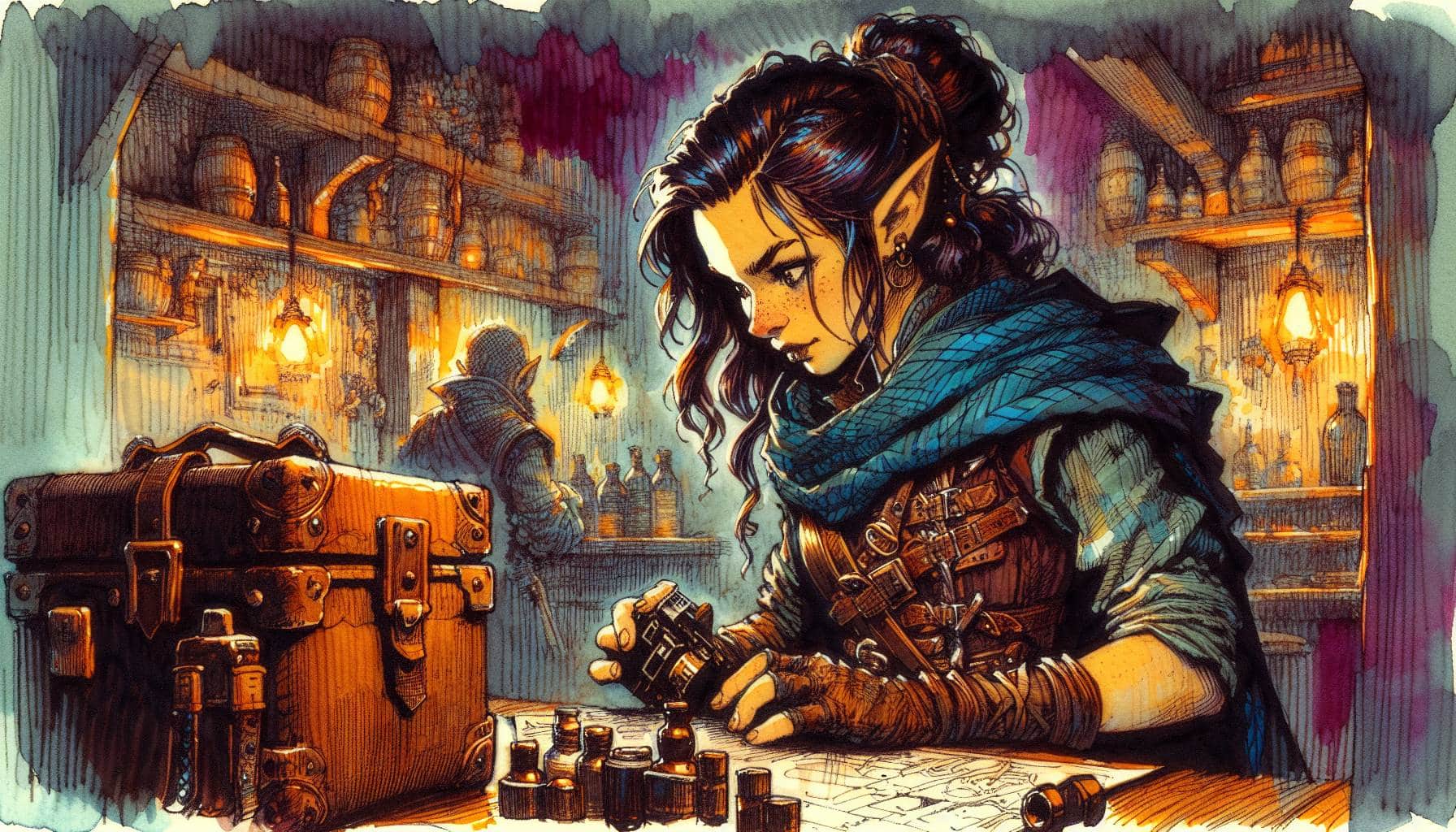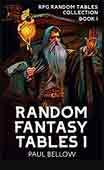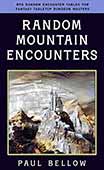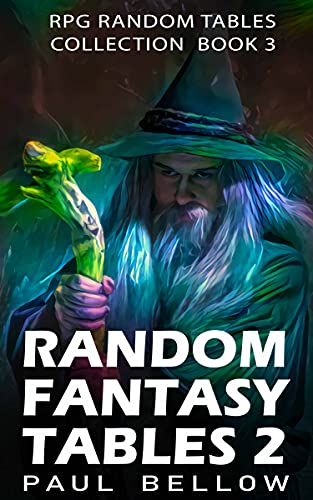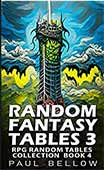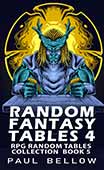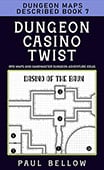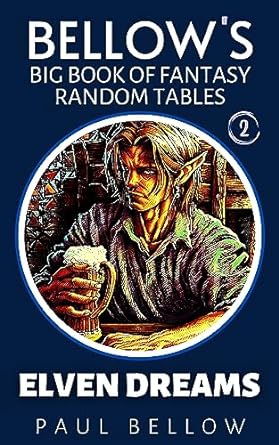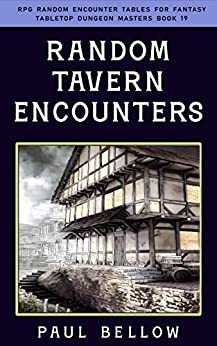Ah, the mysteries of Dungeons & Dragons—a realm where the only thing thicker than a gelatinous cube is a good plot twist. The allure of mystery adventures in D&D lies not just in the thrill of the unknown, but in the joy of watching your players morph into amateur sleuths, putting their collective noggins together like a medieval Scooby-Doo gang. There’s a certain art to weaving these tales, a mix of strategy and creativity that demands a sharp eye for detail and a Sherlockian knack for suspense.
Constructing a mystery that is both immersive and demanding is akin to assembling a jigsaw puzzle while blindfolded, using pieces that sometimes swear they fit where they truly don’t. The satisfaction is hard-earned but unparalleled—as each clue clicks into place, the narrative picture becomes clearer, with players reveling in their deductive triumphs. The best mysteries challenge players to think analytically, engage in spirited roleplay, and work as a team to outsmart the cleverly constructed conundrums that stand before them.
The allure of such adventures is not just in their outcome, but in the journey, a winding path of speculation, wrong turns, and eureka moments. Constructing mysteries in D&D requires not just a keen mind but an adaptive spirit, for your players will inevitably toss your neatly crafted plans into delightful chaos, turning your narrative roadmap into a Mad Hatter’s tea party somewhere around the third act. Yet it’s in these moments of improvisation that the real magic happens.
As a Dungeon Master, your challenge is to keep this chaotic train on the tracks, ensuring that the adventure remains thrilling, engaging, and rewarding. Whether it’s through crafting elaborate puzzles or conjuring memorable NPCs, the goal is to make every twist and turn a testament to your players’ creativity and problem-solving prowess.
Understanding the Core Components of a D&D Mystery
In the enigmatic world of D&D, a mystery adventure is like a cauldron bubbling with intrigue, unpredictability, and more red herrings than a fish market sale. At its core, a mystery adventure must lean into the dynamic, unpredictable nature of tabletop gaming. There’s no single protagonist here—every player contributes to the unfolding story, their decisions shaping the narrative in wondrous and unforeseen ways.
The backbone of a solid mystery adventure lies in the carefully placed clues and, yes, those devilish false leads. Clues are the breadcrumbs that lead players to the gingerbread house of revelation, while false leads keep them guessing, ensuring they never become too comfortable in their conclusions. Balancing these two elements is crucial; too many false leads may frustrate, but too few will make the path to solving the mystery all too predictable.
Try my AI Tabletop RPG generators...and an extensive library of content!
Tension and intrigue must be maintained like a tightrope walker over a pit of snapping plot holes. This is achieved not merely through the content of your story but also how you deliver it—drips of information, tantalizing hints, and NPCs with just the right amount of smarminess or sincerity to keep players on their toes. The key is to foster an atmosphere where players are both encouraged to question everything and rewarded for their persistence and ingenuity.

Constructing the Narrative Arc of a Mystery Adventure
Imagine your mystery adventure as a roller coaster of revelations, each twist and turn engineered to thrill. The narrative arc begins with a tantalizing introduction—an event, a crime, or an anomaly that tugs at your players’ curiosity strings and beckons them to begin their investigation. This is your hook, and it should be as irresistible as a siren’s song, prompting players to don their detective hats and dive headlong into the investigation.
As the investigation unfolds, players should encounter a succession of spine-tingling discoveries and dead ends. Here, they piece together their understanding of the narrative, each clue leading to the next in a dance of deduction. The crescendo arrives with jaw-dropping revelations, where truths are uncovered, and long-held suspicions come to light. It all culminates in a breath-stealing conclusion, where all threads tie together (hopefully) in an oh-so-satisfying finish.
In crafting this narrative, it’s vital to create an environment where players take the lead in piecing together the plot. Encourage exploration, debate, and deduction, for these are the beats that transform a good story into an unforgettable campaign. The more you can make your players feel like true detectives uncovering secrets through their own actions, the more rewarding the mystery will be.
⚔️ Fantasy RPG Random Tables Books
Make life as a Gamemaster easier…
If you play Dungeons & Dragons, Pathfinder, or other fantasy RPGs, this
RPG random tables series
is packed with encounters, NPCs, treasure, and more. Available in eBook or print—either way, you’ll have a wealth of adventure ideas at your fingertips.
Designing Effective Clues and Misdirections
Designing clues in a D&D mystery is akin to laying a treasure map that only reveals itself piece by piece. The art of crafting these clues—and their mischievous counterparts, the red herrings—is both delicate and daring. They must be seamlessly integrated into your world and varied enough to keep players engaged and guessing.
Consider the following categories of clues: enigmatic objects, testimonial evidence, enchanted artifacts, and symbolic gestures. Each type has its role to play, offering different angles for players to explore.
- Enigmatic: Obscure items with hidden meanings or uses.
- Testimonial: NPC accounts, some truthful, others deceitful.
- Enchanted: Magical items or phenomena, revealing or misleading.
- Symbolic: Objects or events with metaphorical significance.
Here are 14+ suggestions for diverse clues and false leads:
- Mysterious letters with missing words
- NPC alibis with time discrepancies
- A broken object with missing pieces
- Cryptic symbols scrawled in hidden places
- An ancient map leading nowhere
- An enchanted mirror reflecting lies
- Rumors of a secret passage that doesn’t exist
- A diary with ripped out pages
- Footprints that change direction
- An animal behaving strangely
- Music that plays with no source
- Suspiciously placed personal items
- A local legend mirroring current events
- A previously friendly NPC acting suspiciously
Balancing the difficulty of clues is crucial to avoid player frustration. Aim to challenge without overwhelming, always ready to provide a gentle nudge or hint when necessary. Should players stray too far down a wrong path, subtly guide them back without snatching away their agency. Remember, it’s about making them feel like geniuses when they finally crack the case.
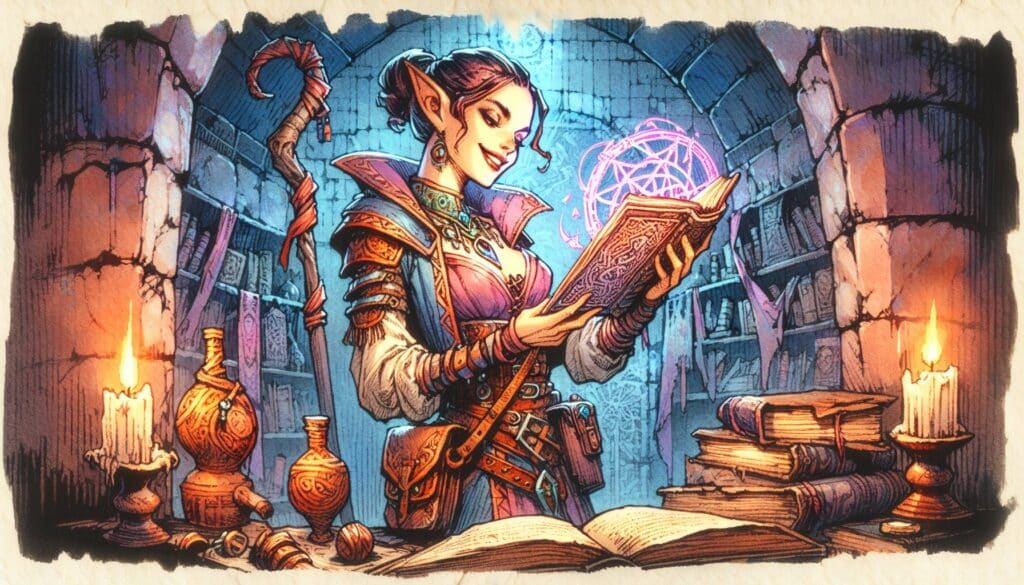
Genre-Bending Mystery Adventures
D&D is a multi-genre playground, and mysteries are no exception. Whether you’re weaving a spine-chilling horror, a tale of political betrayal, or a classic whodunit, the genre you choose will shape your mystery’s pacing, tone, and overall feel.
| Genre | Varieties of Mystery Adventures | Pivotal Elements to Emphasize |
|---|---|---|
| Horror | Ghostly hauntings, demon curses | Atmosphere, dread, fear |
| Political | Espionage, betrayal | Intrigue, alliances, motives |
| Noir | Private-eye investigations | Mood, moral ambiguity, grit |
| Arcane | Magical anomalies, wizard enigmas | Mystery, wonder, magic |
| Fantasy | Classic whodunits, treasure hunts | Adventure, fantasy tropes |
| Sci-fi | Alien abductions, tech puzzles | Innovation, technology, the unknown |
| Supernatural | Vampire hunts, werewolf trackers | Myths, the supernatural, lore |
| Western | Outlaw pursuits, gold rush hoaxes | Frontier justice, ruggedness |
| Steampunk | Clockwork conundrums, airship sabotage | Invention, steam power, aesthetics |
| Mythological | Divine intervention, ancient prophecies | Legend, epic heroes, destinies |
| Urban | Gang conflicts, city corruption | Society, crime, urban jungle |
| Historical | Time-travel mysteries, ancient secrets | Accuracy, historical context, authenticity |
Play with genre norms to surprise players and enrich your mystery’s layers. Infusing genres with unexpected twists will keep players on edge and deepen the enigma, allowing you to create a multifaceted mystery experience.
Setting-Driven Mysteries
The setting of your adventure serves as a vital character within the unfolding narrative, deeply influencing the tone and atmosphere of the entire mystery. It’s not simply a backdrop; it breathes life into the plot and enriches the experiences of the players. Imagine the bustling streets of a vibrant city, where the cacophony of merchants hawking their wares blends with the laughter and chatter of townsfolk. Here, every alleyway could hide a covert meeting, every tavern might whisper secrets, and each corner store could conceal an essential clue vital to unraveling the story’s enigma. As your players navigate through this urban labyrinth, they might stumble upon a mysterious missing person case linked to the rise of underground factions vying for control. The presence of diverse cultures enriches the landscape with vivid tapestry—street performers drawing crowds, local cuisine tantalizing the senses, and the ever-present hint of danger lurking just beneath the surface, where deals are made in shadows and trust is scarce. In stark contrast, imagine guiding your party through vast and untamed wilds, where the natural world itself becomes a formidable adversary. Here, every rustling of leaves might signal unseen wildlife, and each hidden pathway could lead to ancient ruins filled with untold histories. In this setting, players must rely on their cunning and resourcefulness to survive the challenges posed by nature, be it unpredictable weather, treacherous terrain, or the need to forge alliances with elusive woodland creatures. The air is thick with the scent of pine and damp earth, and the thrill of discovery pulses through every adventure—a hidden grove or a shimmering waterfall may mark the location of a long-lost treasure or fabled shrine, waiting to divulge its secrets to those brave enough to seek them out. Alternatively, consider a perilous journey across turbulent seas, where the vast expanse of water forms an unyielding barrier between adventure and danger. The rolling waves can either be a blessing or a curse, concealing the treasures of sunken ships or the lurking threat of sea monsters. The creaking of the ship’s timbers and the salt spray of the brine provide a sensory experience that envelops the players, making them feel as though they are truly at the mercy of the ocean’s whims. Here, they might encounter rival pirates looking to claim their bounty or strange islands shrouded in mist, home to ancient mysteries and uncharted territories. Each environment your players traverse offers distinctive challenges and unique clues that stimulate their problem-solving skills and heighten their engagement with the narrative. From deciphering ancient texts found in a forgotten temple hidden in the jungle to decoding the cryptic graffiti seen in the city’s underbelly, the setting naturally weaves into the fabric of the mystery, pushing the players to understand not only the physical layout of their surroundings but also the intricate relationships and histories that inhabit them. Ultimately, the richness of your adventure setting invites players to immerse themselves fully within the story, fostering a connection that transcends the mere act of play. The sights, sounds, and feelings of each location shape their quests and decisions, transforming the exploration into a living tapestry where every stone, every shadow, and every whisper becomes a pivotal part of their journey. By carefully crafting these environments, you not only enhance the tension and intrigue of the mystery but also enrich the emotional investment of your players, creating an unforgettable narrative experience that lingers long after the last dice has been rolled.
| Environment | Suitable Types of Mystery Adventures | Key Setting-Inspired Clues |
|---|---|---|
| City | Urban crime, secret societies | Graffiti, city maps, overheard conversations |
| Wilds | Lost expeditions, druidic secrets | Animal tracks, natural disturbances, jungle whispers |
| Seas | Pirate treasure, ghost ships | Nautical charts, washed-up relics, sea shanties |
| Desert | Ancient ruins, sandstorm disappearances | Shifting sands, mirages, lost carvings |
| Mountain | Hidden fortresses, mining accidents | Echoes, landslides, high-altitude relics |
| Forest | Fey trickery, woodland mysteries | Rustling leaves, hidden paths, fairy rings |
| Swamp | Bog creatures, smuggling routes | Muddy tracks, hidden lagoons, will-o’-the-wisp sightings |
| Underground | Cave networks, dwarven secrets | Echoes, rock carvings, glowing fungus |
| Arctic | Lost expeditions, frost giants | Frozen clues, shifting ice, snow shelters |
| Plains | Nomadic tribes, ancient battles | Grass patterns, old relics, scattered bones |
| Islands | Stranded survivors, hidden treasures | Exotic flora, driftwood signs, ancient maps |
| Celestial | Astral mysteries, divine plans | Constellations, star maps, cosmic visions |
Settings enhance the depth of your mystery, providing a rich tapestry to weave your narrative through. Leveraging this to create an atmosphere of suspense and curiosity will craft unforgettable experiences for your players.
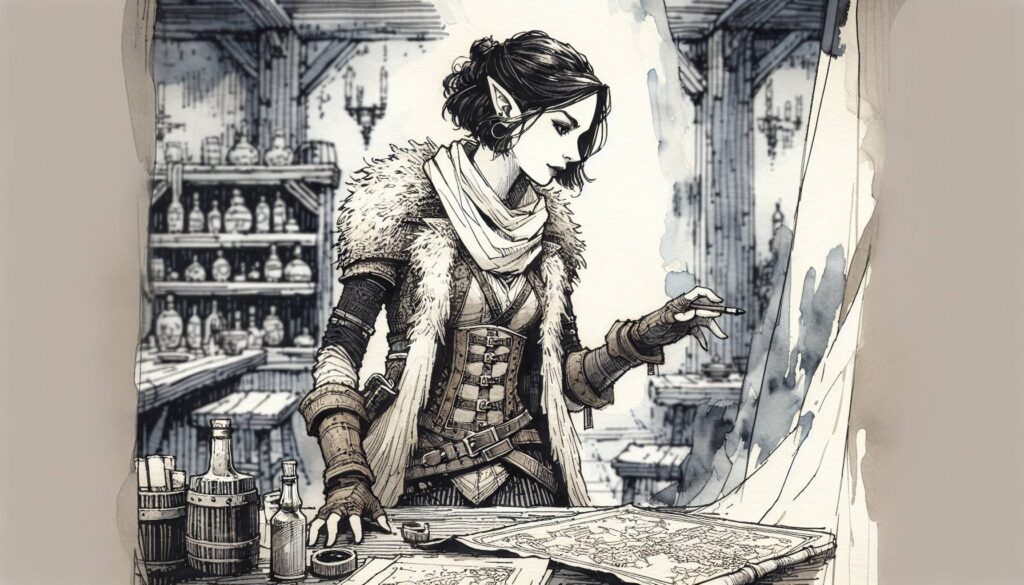
Boosting Player Engagement in Mysteries
Player engagement is the rocket fuel that propels a mystery adventure. By fostering an environment of freedom and creativity, you can transform your game into an interactive masterpiece, where players are the architects of their discovery. Encourage players to think outside the box, offering them multiple routes to solve the mystery. Eschew railroading in favor of sandbox mysteries where their choices truly matter. By empowering players to make decisions, you create a narrative that feels both personal and impactful.
Here are 13+ inventive strategies to heighten player engagement:
- Allow narrative flashbacks to piece together clues
- Use props like maps or letters for tactile immersion
- Create unique puzzles that require group problem-solving
- Offer NPC allies with unique insights
- Implement a “clue clock” to add urgency
- Use soundtracks to set the mood
- Encourage role inversion—players as suspects
- Introduce time loops or parallel dimensions
- Allow magic to reveal or obscure clues
- Offer dynamic environments that change with time
- Use dreams or visions as cryptic guides
- Encourage players to document findings collaboratively
- Introduce rival investigators as friendly competition
To adaptively modify mysteries, be ready to pivot based on player interpretations, overlooked clues, or unexpected decisions. Flexibility keeps the story fresh and responsive, ensuring an ever-evolving mystery that remains engaging and satisfying. Embrace the unpredictability of your players’ choices; they may take the narrative in directions you never anticipated, leading to the emergence of fantastic subplots or unexpected alliances. This adaptability is the hallmark of a great Dungeon Master, as it allows you to enhance the mystery dynamically, weaving in new threads and adjusting established ones based on player interaction.
Consider your players as co-authors of the adventure, and trust them to inject their unique insights and ideas into your narrative tapestry. Their creativity can breathe life into your mystery, revealing hidden depths and complexities you had not considered. When players unearth an overlooked clue or interpret a piece of the puzzle with brilliance, don’t hesitate to reward their ingenuity by expanding the storyline to incorporate their ideas fully. Cultivating an environment where players feel their choices matter enhances not only their engagement but also the richness of the experience, allowing every session to flourish with unexpected twists and intricate character dynamics that keep everyone on the edge of their seats.
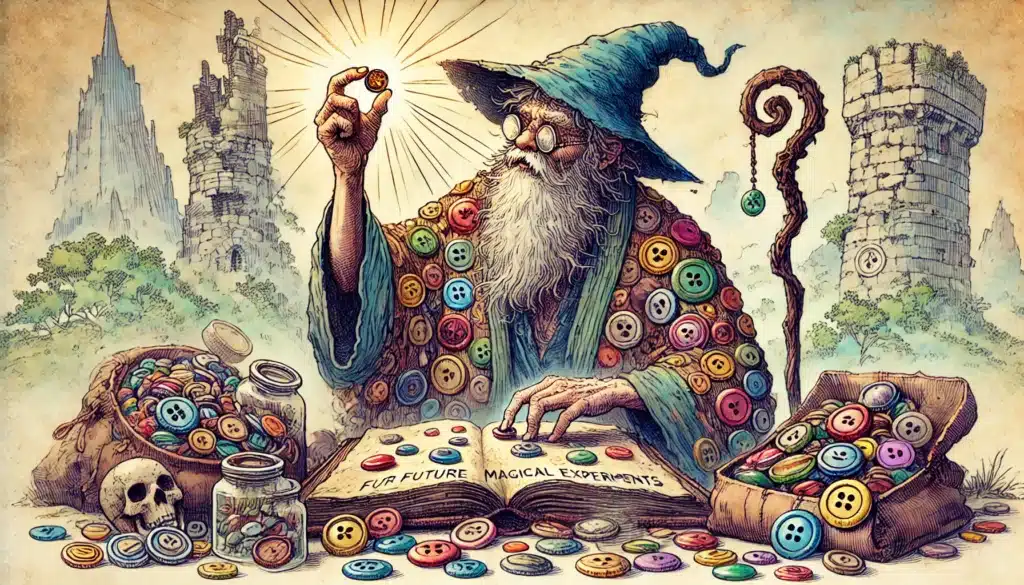
Final Reflections on D&D Mystery Crafting
Crafting mystery adventures in Dungeons & Dragons (D&D) is akin to juggling flaming swordfish while balancing precariously on a unicycle stretched high above a chasm—a precarious yet exhilarating blend of skill, creativity, and just a sprinkle of delightful insanity. The true essence of this art form lies in the meticulous planning interwoven with the ability to adapt spontaneously, producing a story that seduces the senses while keeping players on edge with excitement. The careful construction of mysteries necessitates a nuanced understanding of pacing, allowing for the deliberate slow boil of tension that culminates in an explosive climax players fervently crave—a thrilling moment that makes all the effort worthwhile.
To truly excel in the crafting of these enigmas, you must think of the narrative as more than just a riddle waiting to be solved. Instead, it becomes an immersive experience that players eagerly engage with, transforming the adventure into a labyrinthine journey filled with twists, turns, and surprises that reward both perseverance and creative ingenuity. The challenge lies in the delicate balance between providing clues that entice player curiosity and confounding twists that engage them, keeping everyone guessing and eagerly pursuing the threads of investigation.
Embrace the wonderfully chaotic nature of collaborative storytelling because, at its core, D&D is about forging shared experiences. When the dice clatter across the table and your players begin to weave their own narratives, allow their curiosity and decisions to steer the flow of the plot. This collaborative spirit not only keeps you as the Dungeon Master on your toes, adapting to their unpredictable actions, but also guarantees that each mystery adventure is not just a repeat of the last, but a unique tableau painted with the vibrant colors of individual player contributions.
Never underestimate the allure of mystery storytelling and its profound ability to engage and captivate hearts and minds. By adopting the mindset of a seasoned mystery writer—one who covets intrigue, discovery, and complexity—you can create unforgettable adventures that resonate with players long after the final curtain falls. Each plot twist, every cryptic hint, and all the palpable tension you build contributes to an experience that becomes part of the shared lore of your gaming group.
So, as you prepare to embark on this thrilling venture into the world of D&D mystery crafting, sharpen your pencils, don your metaphorical detective hats, and immerse yourself in the wondrous possibilities that lie ahead. Design intricate plots that twist like winding labyrinths, populate your narrative with a colorful cast of characters—from suspicious villagers to enigmatic scholars—each holding a piece of the puzzle. Challenge your players not just to solve the mystery, but to uncover the depth of the story behind it, forging connections with the world you’ve created.
Remember, the journey your players are about to undertake is not merely about unraveling a tale; it’s an odyssey of interaction and exploration, where each session brings new revelations and delights. Your players eagerly await the opportunity to unravel the mysteries you spin, and with the right blend of craft and unending creativity, the magical journey you embark on will leave an indelible mark on their hearts and minds, crafting memories that will last a lifetime. So take a deep breath, embrace the exhilarating chaos that is D&D, and let your imagination soar as you create adventures that can only be found in the realm of fantasy.
⚔️ Fantasy RPG Random Tables Books
Make life as a Gamemaster easier…
If you play Dungeons & Dragons, Pathfinder, or other fantasy RPGs, this
RPG random tables series
is packed with encounters, NPCs, treasure, and more. Available in eBook or print—either way, you’ll have a wealth of adventure ideas at your fingertips.

